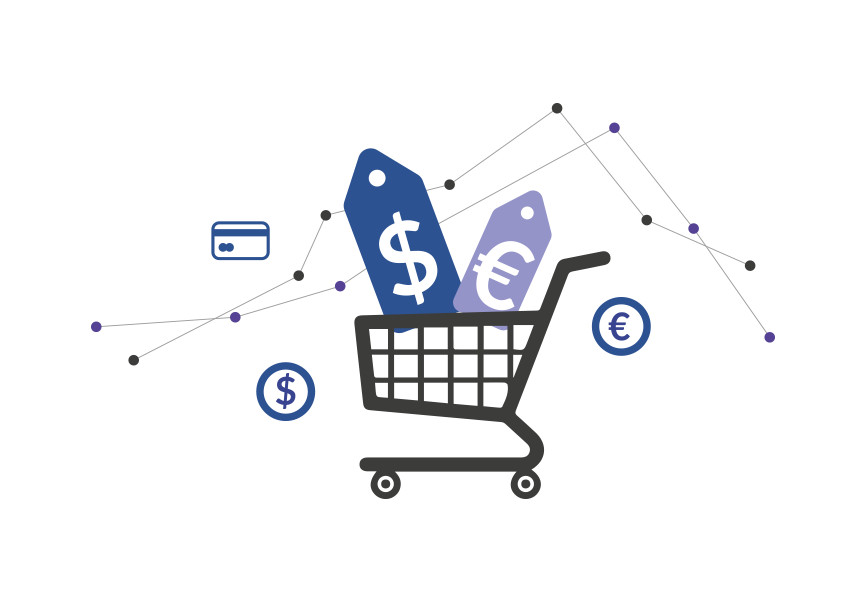Decline in demand and decrease in margin online due to COVID-19
- 30 April 2020

The COVID-19 pandemic has significantly affected many sectors of the economy. Some industries have seen revenue increases, but there are also those where the demand for products and services has dropped dramatically. Sellers take various actions to protect themselves against loss of trade. One of them is lowering prices at the expense of the margin. So what is the current situation in such industries?
Products with falling demand
We’ve looked at the changes in individual industries in a more detailed article on pricing during a crisis. The categories that recorded a decline in demand caused by the epidemic include primarily luxury and premium goods, fashion, books, and toys.
A typical example of falling prices caused by reduced demand is the cameras shown in the charts below. Drastic reductions occurred in the second half of March, i.e. just after the restrictions related to the coronavirus epidemic were announced. Demand for these products has fallen due to travel restrictions, as well as socializing and going outside bans. The lower price level remained until the end of April – so it is unlikely that it will rise before the end of the epidemic.
NIKON Z6+FTZ Adapter camera prices
A similar situation can be observed in the chart below illustrating the prices of the OLYMPUS E-M10III SRE + EX-M1442IIR camera. Here, prices also fell in the second half of March, just after sellers saw the first drops in demand.
OLYMPUS E-M10III SRE+EX-M1442IIR camera prices
Apple products’ prices also fluctuated, which can be explained by belonging to the premium and therefore more expensive category. Tablets, in particular, are falling in price, because they are not the necessities of the first need:
Apple iPad 10,2 WIFI+Cell 32 GB Silver 19 prices
Apple iPad Mini Wi-Fi 265GB Gold prices
The charts below illustrate a similar situation in the category of premium products for large home appliances (white goods). Why only premium? As in the case of tablets, we see a decrease in demand for this type of products caused by consumers’ caution due to the prevailing crisis. At that time, they reach for cheaper products rather than risk buying a washer/dryer oscillating close to 1000EUR and not being a necessary product (unlike a regular washing machine).
Washer/dryer Electrolux EW8W261BP prices
Washer/dryer Hoover WDWT 4138AHC prices
The above charts relate to the prices of the listed products in top stores on the Polish market.
Lowering the margin – is this a good idea?
Some products with reduced demand have been aggressively discounted – both by store owners and manufacturers. Sellers, wanting to get rid of the goods in stock, try to encourage customers to shop. Such actions, however, carry some risk. Once reduced, the price may remain in the consumers’ memory for a long time and result in the loss of the brand image and consumer reluctance to pay the full price after the promotion. Therefore, many brands try to defend themselves against such activities of sellers, because they are afraid of permanent reduction of the margin.
Margin reduction – how to avoid it?
Perhaps not all sellers and producers who currently introduce discounts are forced to give up a large part of the margin. Without accurate data on market prices, steps taken by competitors, and verification of demand, it is very difficult to determine whether a reduction is really a good way to fight for maintaining turnover. Price monitoring is the key step to properly assess the situation. It allows quick insight into the dynamically evolving market situation and to make more accurate price decisions.
Price monitoring during a pandemic – why is it worth it?
We wrote two guides about why and how to use price monitoring data: for brands and for e-shops . Especially now, when a pandemic causes dynamic changes in many markets, it is worth to start price monitoring – both in industries that are experiencing declines and increases. Growing categories also require skillful pricing to help maximize profit.
Reliable monitoring and comparison of results with internal data on product sales also give the opportunity to verify the pricing strategy and determine the direction of optimization. For sellers and brands who have suffered losses as a result of COVID-19, this may be a chance to maintain the price level or take other steps to maintain the margin.
Monitoring multiple platforms and online stores manually can be very problematic. If you are wondering how to do it effectively, please contact us. Our Dealavo platform was created for brands and online stores operating in various industries to help you efficiently monitor market prices.a rynku.